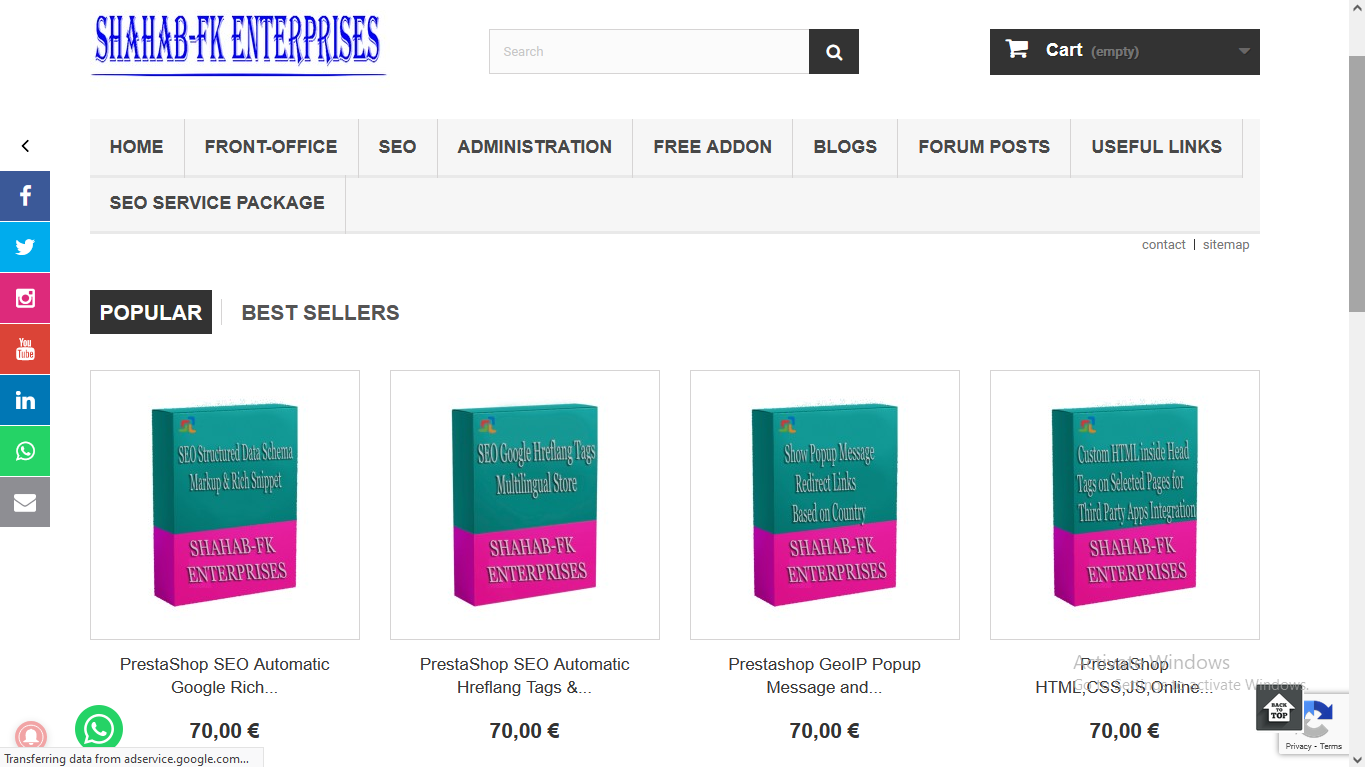Verify the store and its contents
These statistics show you a product overview to ensure consistency in your store.
It’s not always easy to handle the entire store. To avoid forgetting the product descriptions, the automatic warning will suggest a complete description for items that do not have them.
Focus on the type of product sold!
The ranking shows you the biggest or lowest success among your products.
Acting on product success
If a popular product, it would be wise to expand the product range associated with it. For example, if the fountain pen is sold very well, you can offer other products related to this type of pen, such as pen holders, pencils… this is called cross sale.
If a product is not consulted enough or purchased, here are a few tips:
Review the consistency of the description, and accompany photos.
Check whether this product has been placed in the right category, or if the class name is well chosen.
Remember to communicate more about this product: Push forward, launch the promotion on it or an advertising campaign …
If this solution does not work, it might be better to focus on the product that functions and removes it from your store.
Adopt the most suitable marketing strategy
Each product follows its own life cycle. Divided into four main periods, life cycles have specific characteristics and various levels of growth and marketing objectives.
The fourth stage is initiation, growth, maturity, and decline.
By identifying the period in which a current product, you might be able to adjust your marketing strategy for optimal efficiency.
Identify your product phase and act!
During the launch phase: a product that has only been added to the market will have moderate growth. You have to invest a lot in promoting to tell consumers and make them buy new products. Your goal is to get a known product, so don’t hesitate to push it forward, set the game, or place ads in place, to provide good visibility. The more products are seen by consumers, the better sales during the launch phase.
During the growth phase: promotional costs and other costs are reduced, while sales increase. The aim is to support its growth as long as possible, improve product quality and expand its product lines to convince more customers and maintain existing ones, increase distribution, sustainable communication campaigns, gradually reduce prices.
During the maturity phase: sales reached their peak, the speed slowed. The aim is to keep the top product. This is a longer phase than the previous two, where competition might be more ferocious. Therefore, several options are available to meet your goals:
Expand your market by targeting different types of audiences.
Update your product line, by making a package to increase sales.
Maintain customers.
Change some mixed marketing elements (see: http://en.wikipedia.org/wiki/marketing_mix), such as price, distribution, or service.
Analyze and understand the evolution of certain products
Statistics related to unique products help you understand why products have experienced a sharp decline/increase.
You can also use this data to rebuild your stock according to the evolution of sales of this product or consult this data only for information purposes.
Ensure category clarity
What makes people want to visit the category at first glance?
The product category must have a name that attracts visitors’ attention: Definitely meaningful and make people want to know.
Category names like “misc.” or “everything” is not recommended. In addition, products are placed in this category heterogeneous.
So make sure you name each category correctly, and save each product in the most suitable category.
Put a sponsorship system in place

